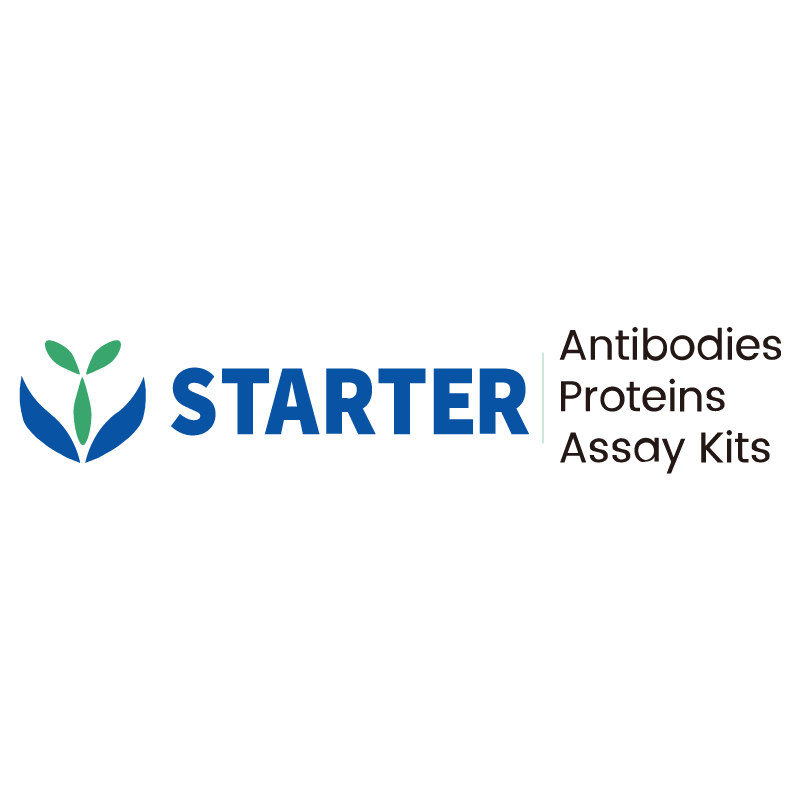WB result of RIPK1 Rabbit pAb
Primary antibody: RIPK1 Rabbit pAb at 1/1000 dilution
Lane 1: HT-29 whole cell lysate 20 µg
Lane 2: HL-60 whole cell lysate 20 µg
Lane 3: Raji whole cell lysate 20 µg
Lane 4: HeLa whole cell lysate 20 µg
Secondary antibody: Goat Anti-rabbit IgG, (H+L), HRP conjugated at 1/10000 dilution
Predicted MW: 76 kDa
Observed MW: 47, 70 kDa
This blot was developed with high sensitivity substrate
Product Details
Product Details
Product Specification
| Host | Rabbit |
| Antigen | RIPK1 |
| Synonyms | Receptor-interacting serine/threonine-protein kinase 1; Cell death protein RIP; Receptor-interacting protein 1 (RIP-1); RIP; RIP1; RIPK1 |
| Immunogen | Recombinant Protein |
| Location | Cytoplasm, Cell membrane |
| Accession | Q13546 |
| Antibody Type | Polyclonal antibody |
| Isotype | IgG |
| Application | WB, IHC-P |
| Reactivity | Hu, Ms, Rt |
| Positive Sample | HT-29, HL-60, Raji, HeLa, NIH/3T3, mouse kidney, mouse heart, C6, rat kidney |
| Purification | Immunogen Affinity |
| Concentration | 0.5 mg/ml |
| Conjugation | Unconjugated |
| Physical Appearance | Liquid |
| Storage Buffer | PBS, 40% Glycerol, 0.05% BSA, 0.03% Proclin 300 |
| Stability & Storage | 12 months from date of receipt / reconstitution, -20 °C as supplied |
Dilution
| application | dilution | species |
| WB | 1:500-1:1000 | Hu, Ms, Rt |
| IHC-P | 1:200 | Hu, Ms, Rt |
Background
RIPK1 (Receptor-Interacting Serine/Threonine-Protein Kinase 1) is a critical decision-maker of cell fate, a multifunctional protein that plays a central role at the crossroads of cell survival, inflammation, and death signaling pathways. Initially identified as a key component of the tumor necrosis factor receptor 1 (TNFR1) signaling complex, it performs dual roles through its kinase activity and scaffolding function: on one hand, it promotes the transcription of pro-survival genes and inflammatory responses by recruiting and activating downstream signaling molecules (such as the NF-κB and MAPK pathways); on the other hand, under specific conditions, RIPK1 can become a powerful driver of cell death, capable of activating caspase-8-mediated apoptosis or participating in the formation of a phosphorylated MLKL-mediated necroptosis complex. Consequently, the activity of RIPK1 is tightly regulated by various post-translational modifications, including ubiquitination, phosphorylation, and caspase-mediated cleavage. Dysregulation of its function is closely associated with numerous pathological processes such as sepsis, neurodegenerative diseases (like Alzheimer's disease and amyotrophic lateral sclerosis), autoimmune disorders, and ischemic injury.
Picture
Picture
Western Blot
WB result of RIPK1 Rabbit pAb
Primary antibody: RIPK1 Rabbit pAb at 1/1000 dilution
Lane 1: NIH/3T3 whole cell lysate 20 µg
Lane 2: mouse kidney lysate 20 µg
Lane 3: mouse heart lysate 20 µg
Secondary antibody: Goat Anti-rabbit IgG, (H+L), HRP conjugated at 1/10000 dilution
Predicted MW: 76 kDa
Observed MW: 47, 70 kDa
This blot was developed with high sensitivity substrate
WB result of RIPK1 Rabbit pAb
Primary antibody: RIPK1 Rabbit pAb at 1/1000 dilution
Lane 1: C6 whole cell lysate 20 µg
Lane 2: rat kidney lysate 20 µg
Secondary antibody: Goat Anti-rabbit IgG, (H+L), HRP conjugated at 1/10000 dilution
Predicted MW: 76 kDa
Observed MW: 47, 70 kDa
This blot was developed with high sensitivity substrate
Immunohistochemistry
IHC shows positive staining in paraffin-embedded human kidney. Anti-RIPK1 antibody was used at 1/200 dilution, followed by a HRP Polymer for Mouse & Rabbit IgG (ready to use). Counterstained with hematoxylin. Heat mediated antigen retrieval with Tris/EDTA buffer pH9.0 was performed before commencing with IHC staining protocol.
IHC shows positive staining in paraffin-embedded human cardiac muscle. Anti-RIPK1 antibody was used at 1/200 dilution, followed by a HRP Polymer for Mouse & Rabbit IgG (ready to use). Counterstained with hematoxylin. Heat mediated antigen retrieval with Tris/EDTA buffer pH9.0 was performed before commencing with IHC staining protocol.
IHC shows positive staining in paraffin-embedded human colon cancer. Anti-RIPK1 antibody was used at 1/200 dilution, followed by a HRP Polymer for Mouse & Rabbit IgG (ready to use). Counterstained with hematoxylin. Heat mediated antigen retrieval with Tris/EDTA buffer pH9.0 was performed before commencing with IHC staining protocol.
IHC shows positive staining in paraffin-embedded human gastric cancer. Anti-RIPK1 antibody was used at 1/200 dilution, followed by a HRP Polymer for Mouse & Rabbit IgG (ready to use). Counterstained with hematoxylin. Heat mediated antigen retrieval with Tris/EDTA buffer pH9.0 was performed before commencing with IHC staining protocol.
IHC shows positive staining in paraffin-embedded mouse cardiac muscle. Anti-RIPK1 antibody was used at 1/200 dilution, followed by a HRP Polymer for Mouse & Rabbit IgG (ready to use). Counterstained with hematoxylin. Heat mediated antigen retrieval with Tris/EDTA buffer pH9.0 was performed before commencing with IHC staining protocol.
IHC shows positive staining in paraffin-embedded rat cardiac muscle. Anti-RIPK1 antibody was used at 1/200 dilution, followed by a HRP Polymer for Mouse & Rabbit IgG (ready to use). Counterstained with hematoxylin. Heat mediated antigen retrieval with Tris/EDTA buffer pH9.0 was performed before commencing with IHC staining protocol.


